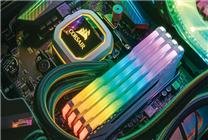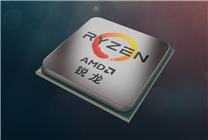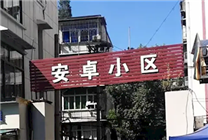Memory Prices Surge: A Wake-Up Call for Buyers
Summary:
- The past two months have seen a dramatic rise in memory chip prices, significantly impacting the market.
- DDR4 and DDR5 prices have skyrocketed, with increases of 158% and 307%, respectively.
- A continued price surge is anticipated, forcing manufacturers to adapt to higher costs.
The memory chip market is currently witnessing unprecedented volatility, marking a critical juncture for both consumers and manufacturers. In sharp contrast to the Waiting Party’s adage, "buy early and enjoy early, buy late and enjoy discounts," recent trends suggest that procrastination could lead to missed opportunities and increased costs. As of today, a sweeping rise in memory prices has created hurdles for potential buyers and has fundamentally altered the market landscape.
The Latest Trends in Memory Pricing
According to the latest spot price tracking report, a significant uptick in memory chip prices has been observed over the past two months. Both DDR4 and DDR5 memory chips have experienced remarkable price spikes. Specifically, DDR4 1Gx8 modules have risen by an astonishing 158% month-on-month, while DDR5 2Gx8 modules have surged by an eye-popping 307% month-on-month. These dramatic increases have left many would-be buyers hesitant to make purchasing decisions, as they grapple with the implications of such soaring prices.
Despite this hesitance, the price trajectory remains upward. The fluctuations in NAND flash memory prices are equally notable, further complicating the purchasing landscape and stifling transaction volumes.
Understanding Market Dynamics
It’s crucial to note that these price adjustments are confined to the spot market. The broader global market still predominantly relies on contract pricing, which is generally negotiated quarterly. While it is unlikely that contract prices will mirror the threefold increases seen in spot transactions, recent reports from leading manufacturers like Samsung, SK Hynix, and Micron indicate a 40% to 60% increase. Thus, an escalation in contract prices is imminent.
Market analysts suggest that the upward trend in memory prices is likely to persist through the second half of next year. Some commentators even go so far as to predict a bull market for memory chips lasting up to a decade. This unsettling forecast poses challenges for downstream manufacturers, including those in the mobile phone and PC sectors, who must navigate higher costs to secure essential supply chains.
Implications for Manufacturers and Consumers
As memory prices continue to soar, the short-term outlook indicates no reduction in pricing. A handful of manufacturers control a significant portion of production capacity, allowing them to maintain elevated prices. To sustain this market environment, some companies are opting to reduce expenditures and curtail production capacity.
For manufacturers and consumers alike, these developments necessitate a reevaluation of purchasing strategies. Companies reliant on memory chips must decide whether to accept higher contract prices to ensure supply. Consumers, on the other hand, must consider the timing of their purchases carefully—delaying decisions could lead to even steeper costs down the line.
Looking Ahead
In summary, the memory and flash memory markets are currently experiencing a seismic shift that reveals no signs of abating. With prices soaring and confidence wavering, stakeholders from manufacturers to consumers are grappling with what these changes mean for their future purchasing decisions. As the wait continues for stabilization in the market, it is clear that both caution and strategic decision-making will be crucial in navigating these challenging waters.
The memory chip landscape has forever changed, and adapting to this new reality will be vital in the months and years to come.








